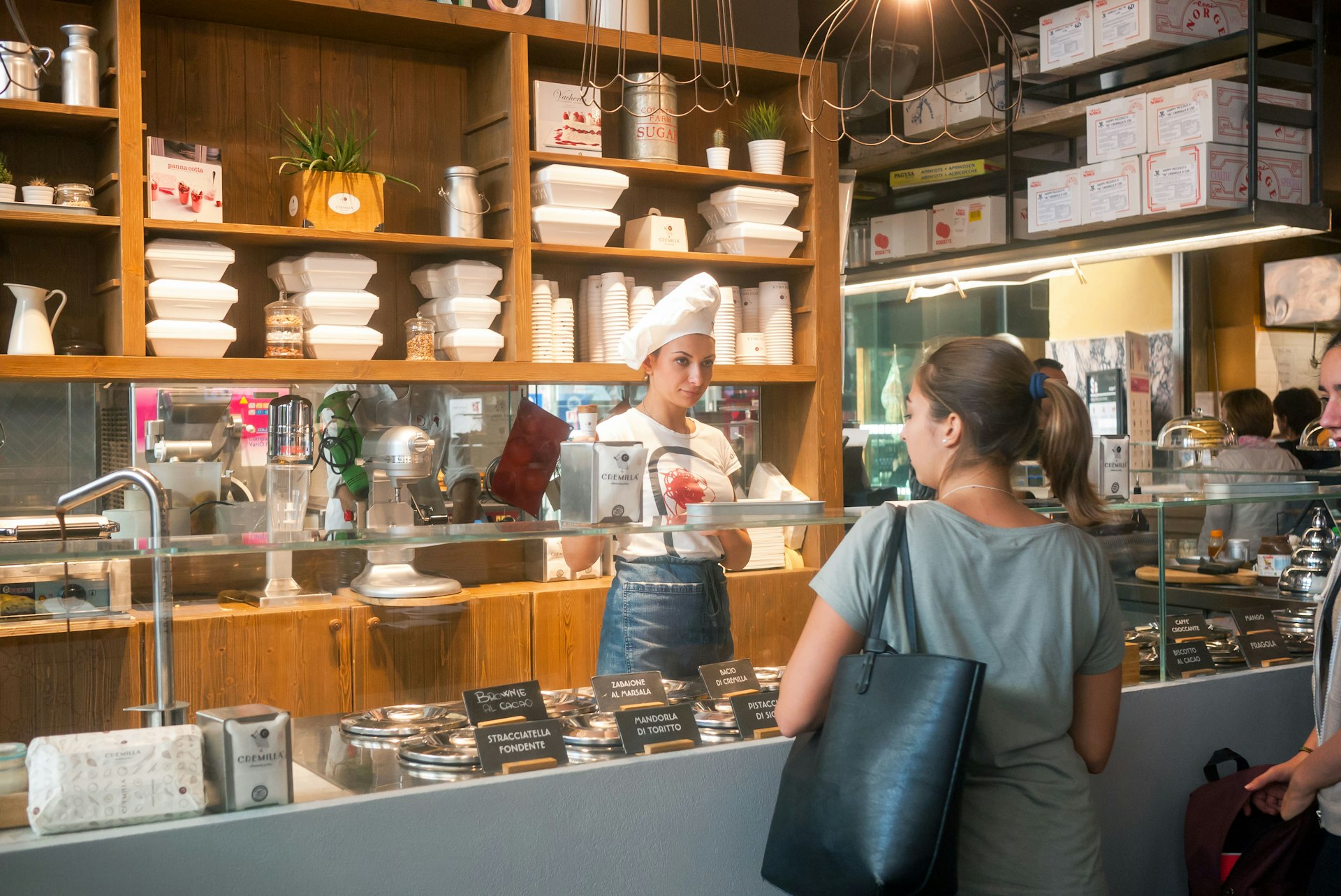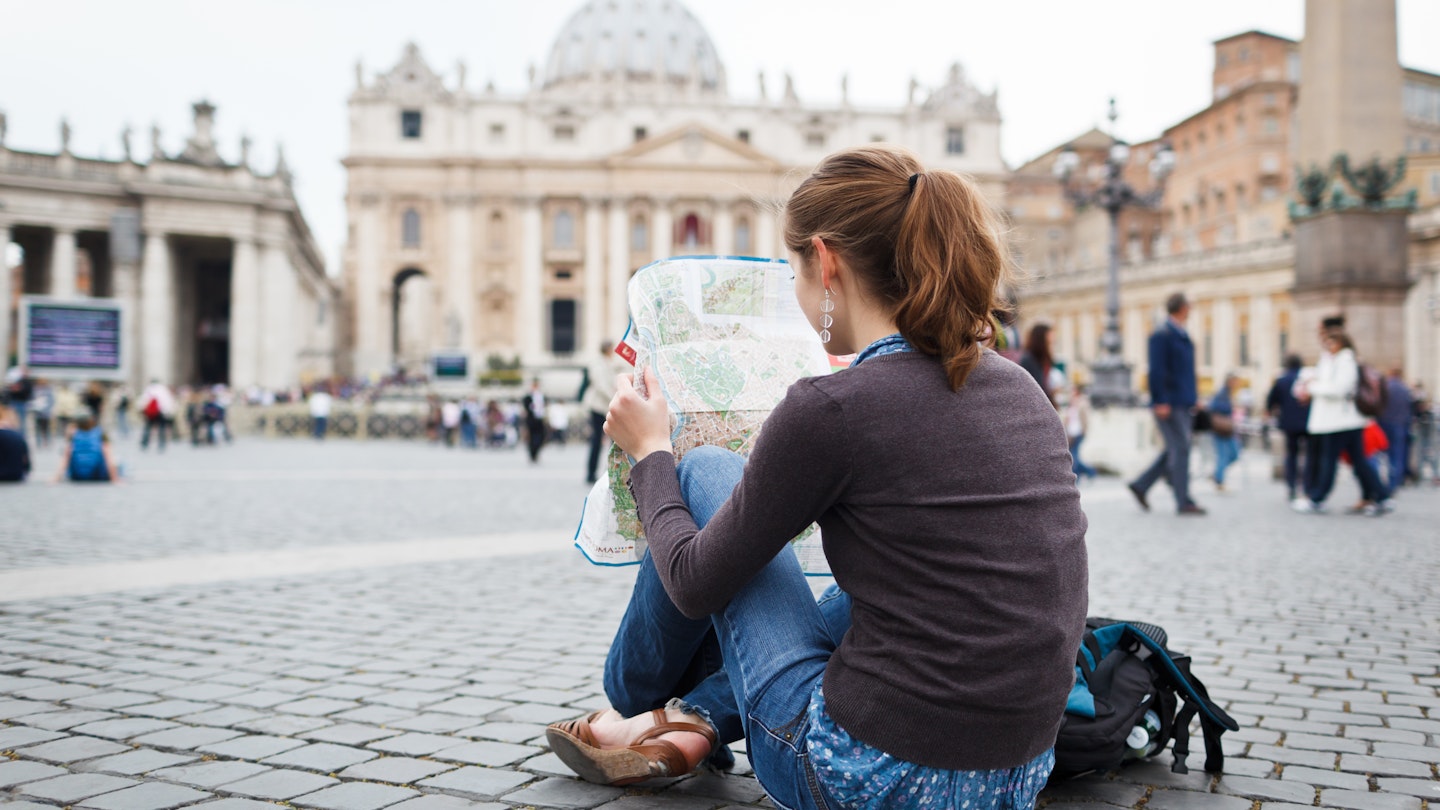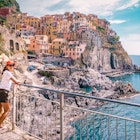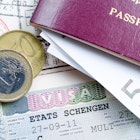Rome, like all great cities, is a carnival. Once you’ve paid your ticket to enter, the world of wonders opens up, most of which are just a click of the heels away. For a fee, of course. But the thing about carnivals is that beyond the big prizes and fast rides, there are scores of things to do and see and be delighted by, many of which do not involve leaving with empty pockets and shattered expectations. So too can you visit Rome without over-extending your budget. With a little organizing and a lot of creativity, Rome might be one of the easiest cities in the world to dive in and join the party.

Find the neighborhood that matches your budget
Like most major cities, there are a range of things to see, do, eat, and drink: you can break the bank on bucket-list wishes or stretch your funds as far as you need them to go. Whatever you’re looking to get from a trip to Rome, however, it’s best to start with realistic expectations. If you’re planning to sleep near the Trevi Fountain or Spanish Steps, be prepared to spend at least €200 a night for a mid-range hotel. Likewise, you’ll likely pay more than €3 for a coffee, €10 for a pizza, and exponentially more for dinner (think €50 per person). But with a few easy adjustments and a shift in your perspective, you’ll find more budget-friendly options that will very likely be unbeatable experiences. Plan for a budget of around €100 to €250 per person per day.
Do your homework
Rome is basically a living museum and as such, it helps to get a sense of it before you arrive. By learning a bit more about the city you’ll find plenty of free, lesser known sites that are just as fascinating as the iconic stops, and what’s more, you can plan walking tours to soak it all in at your own pace. The epic Circo Massimo is only a short walk away from the Forum and you can wander the grounds like a gladiator or visit the carefully curated Rose Garden that sits right above it. Or go a bit further afield to the Pyramid of Caius Cestius in Ostiense, where the Non-Catholic Cemetery of Rome hides some of the city’s most eclectic residents.
Planning tip: Architectural historian Agnes Crawford’s free newsletter Understanding Rome is a great place to start planning your journey. Subscribers can bring her podcast with them as they go. Get your notebook ready, and you won’t regret finding your own way around Rome.

There’s no off-season
Everyone knows how many people come to Rome in the high season, and the crowds around key parts of the city are intense between May and September as they are in much of Italy. However unlike seaside destinations, Rome is open for business all year round and can be enjoyed just as much in early spring as it can in the height of summer (maybe even more). There will undoubtedly be better rates on flights and accommodation if you travel during low or mid seasons: flights can be half the price or more, depending on your search bar savvy. Expand your travel timetable and you’ll find your favorite monuments, restaurants, and neighborhoods noticeably less crowded.
Use public transport and explore outside the center
One of your biggest expenses will be your home base, and accommodation in Rome is not cheap. However, Rome’s public transport network is comprehensive and if you go just outside of the historic center you’ll find a tremendous range of hotels, B&Bs, and other specialty accommodations in fabulous neighborhoods that are never too far from all the action. Indeed, if you set up camp in the Ostiense, San Giovanni, or Prati neighborhoods you might find that the action is right at your doorstep, and your entire experience of Rome is all the better for it.

Eat at local markets
In a shocking bit of secret info, the food in Rome is quite simply phenomenal. People have moved here after a pizza stole their heart and they’ve written odes to rigatoni. Eating a full meal in a typical Roman trattoria is a big commitment for both your belly and your wallet, and after a few days of it you might feel like all you’re doing is eating.
But you don’t have to go to a restaurant to eat excellent local food. In fact, you’re better off not doing so more than once or twice (preserving the aforementioned belly and wallet). Instead, join the locals at Mercato Testaccio for their daily shop of vegetables, cured meats, and cheeses from small producers who’ve had their stalls for generations. Or wander through the epic Mercato Trionfale in Prati for samples of luxe delicacies like truffles that Romans flock here for.
Local tip: If you’re in the center of town, the hip Mercato Centrale in Termini station features a fabulous selection of budget-friendly meals at stalls from people like Stefano Callegaris, whose Trapizzino is the greatest sandwich you’ll ever have. Try the tongue!
Follow your feet
Rome is just about the best place in the universe to wander and get (mildly) lost, and the best way to see it is on foot. Tours in little cars may look cute from the road, and they’ll make great social media posts, but you can’t pick up all of the little touches that make Rome magical. You’ll miss the music on Ponte Sisto, the cats at the Pyramid, and the view from the Giardini degli Aranci. You might even pass right by the rose garden that’s perched over the Circo Massimo, which would be a terrible shame. Invest in a good pair of shoes (break them in beforehand) and equip yourself with an ATAC travelcard for those longer journeys, but let your imagination and your feet do the thinking for you.

Water is everywhere
One of the most humane features of Rome are nasone, the curved fountains you’ll find everywhere around the city. These flow with clean, cold, fresh water that comes from Roman acqueducts and if you have your own bottle you can refill it to your heart's content. Not only is the water drinkable, it's the very same water that gets plumbed into every house in the city. By simply avoiding the outlandishly priced, and environmentally unsound, bottles of water in tourist clusters, you’ll save yourself more money than you think.
Splash out where it matters
Look, no one is saying that you shouldn’t see the big names but if you do, do it right. The Colosseum is worth considering a private tour where you can see the newly opened underground and have it really explained to you. The Sistine Chapel deserves to be visited in some modicum of silence and with a bit of time, which might be more costly but is absolutely more memorable. And of course having a stellar dinner at a starred restaurant is an experience unto itself, and one that Rome provides in an unparalleled manner. But choose wisely: you’ll want to remember those special moments because they stood out, not because you stood in line to have them. After all, no one remembers the carnival for the line. They remember it for the wild rides inside.
Daily Costs in Rome
Expect to pay anywhere between:
- €50 to €80 for a single bed in a mixed dorm hostel
- €110 to €200 for a basic hotel room for two people
- €120 to €250 for a self-catering apartment in walking distance from the historic center (including through Airbnb)
- €1.50 for a one-way ticket on public transport (but travel cards for multiple days are available)
- €1 to €2 for an espresso (if you’re paying more than this walk 2 to 3 blocks in any direction!)
- €3 to €6 for a sandwich
- €50 to €120 for dinner for two including more than one course and wine
- €4 to €6 for a beer/pint at the bar
- €3 to €5 for a small cup or cone of gelato












